Although it is unlikely to have much significance in terms of health, the dimpled looking skin caused by cellulite is bothering many. What do we know about this subcutaneous fat and what - if anything - can we do about it?
In 1968, fashion magazine Vogue introduced the French word “cellulite”, becoming the first English-language magazine to give a name to an aesthetic problem troubling many women, and sometimes also men - non-uniform, dimpled skin appearance. Within just a few years, cellulite became the new scare. Self-proclaimed experts claimed, among other things, that cellulite is not regular fat, but a type of jelly-like tissue that contains water, fat and toxic waste, which accumulates under the skin due impairments in the functioning of the kidneys, the livers and the digestive They further claimed that special measures should be taken to get rid of this supposedly contaminated tissue. Almost overnight, a variety of cosmetic treatments were conceived, promising unproven solutions to an unproven problem.
Jumping forward to the 80’s: the medical establishment already condemns the idea. Dr. Harold Lubin, a prominent member of the American Medical Association, said in an interview for the Washington Post that “There is no such condition as cellulite. Fat is fat. The idea of fat cells containing toxic wastes is not defensible."
And today? Although the secrets of cellulite continue to elude us, we already know quite a bit about it: cellulite is a local aesthetic phenomenon of the skin that usually appears on the back thighs, the buttocks and the abdomen. It is manifested in the form of subcutaneous lumps that disrupt the smooth smooth appearance of the skin, endowing it a dimply non-uniform appearance, somewhat similar to the peel of an orange. Cellulite should not be confused with cellulitis, which is a deep bacterial infection of the skin requiring medical attention, and is a subject for a different article.
Nearly five out of six women worldwide will, to some degree, have cellulite during their lifetime. The phenomenon is naturally not exclusive to women, but it is more common in women than in men.
Lumps and Depressions In The Skin
The skin is the largest organ in our body. It serves as an outer protective layer for our other tissues, protecting us from infections and dehydration. It consists of a number of layers that differ from each other in their composition.
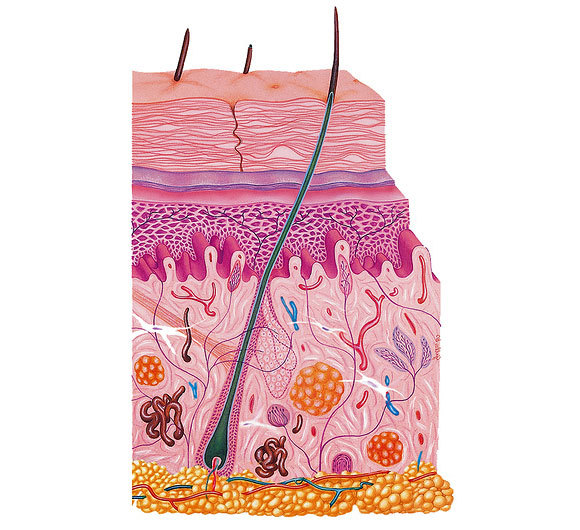
The skin consists of several layers. Illustration of the layers of the epidermis, dermis and hypodermis | Source: Gilles / BSIP / Science Photo Library
The outermost layer is the epidermis. It contains cells rich in a hard protein called keratin, which is also found in hair and nails, and it is this protein that gives our skin its rigidity. Beneath this layer is the dermis, which endows our skin flexibility and elasticity, owing to two important proteins: elastin and collagen. This layer is also home to hair follicles, sweat glands and neural receptors that detect touch, pressure, temperature and more and report these sensations to our brain.
The third and innermost layer is the hypodermis, or the subcutaneous tissue. This is where the source of cellulite can be found: fat cell deposits wrapped in connective tissue fibers. They can be likened to sponge balls contained in a net. The subcutaneous fat cells are used for padding and thermal insulation, and provide us with a reserve supply of energy at times of starvation. The amount of fat cells in this layer varies between different regions of our body and their size depends on our diet.
If the fat cells grow large enough, or if the connective tissue surrounding them is too weak or too stretched, the fat is pushed through the connective tissue. Remember the sponge balls inside the net? Imagine the sponge balls growing and pressing against the net, protruding out of the net’s holes. Over time, the subcutaneous fat is pushed further and further up, until it eventually reaches the dermis layer, invading it. This is what causes the lumpy appearance of the skin, which we call cellulite.
According to everything we know today, cellulite does not endanger our health. However, it may lead to negative mental processes related to body image, as well as mood and behavioral changes in those suffering from the condition.

Doesn’t pose a risk to our health, but may lead to a negative body image. Thigh cellulite | Photo: elenavolf, Shutterstock
Although it is a very common phenomenon, we still do not know what causes cellulite to form. It appears to be a complex problem arising from an entire set of processes occurring simultaneously in our body. Studies indicate a connection between the development of cellulite and a sedentary lifestyle, which includes many hours of sitting, lack of physical activity, certain dietary and hormonal conditions, genetic predisposition, mental stress and inflammatory processes.
Since almost every aspect of our lives may contribute to the development of this cosmetic change, scientists are finding it difficult to isolate the variables involved and to identify the precise chain of events that causes the phenomenon. In addition, since cellulite is more noticeable when the skin is weak and stretched, aesthetic treatments that focus only on removal of the lumps and smoothening of the skin are not effective in the long term. Such treatment weakens the dermis and, over time, fat cells are pushed upwards again. It seems then that it would be better to focus on prevention.
Does It Work Or Does It Not?
Before we delve into the different treatments, it is important to understand that, as of today, there is not much that can be done against cellulite. Out of the wide variety of treatments currently offered on the market, only few have been shown to have some positive effect. Even the most effective treatments that were found, improve the appearance of the skin only slightly, and usually for only a short time.
Another problem lies in the research studies themselves – most of the research into the treatments offered on the market today is not good enough. Some are influenced by the commercial interests of the companies offering the treatments, and even some independent research efforts are affected by the unfortunate fact that the scientific community still is not sure about the physiological mechanism behind the appearance of cellulite, or about a way to measure it objectively and uniformly.
All of these led to the publication of small and faulty studies. In most of them, the number of subjects is very small, in a significant number of them no control group is present and results are assessed mainly by “before” and “after” photos of the subjects. Added to this is the human factor: many of the cellulite studies rely on self-reporting by the subjects, who naturally want the treatment to work and therefore may deliver overly positive and unreliable reports. Researchers’ evaluations based on skin photos are not accurate or objective enough. Therefore, cellulite research papers should be read critically and taken with a grain of salt.
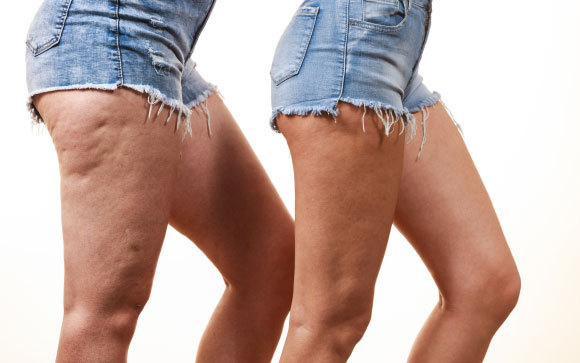
Cellulite occurs in thin people as well. Legs with and without cellulite | Source: Anetlanda, Shutterstock
Weight Loss
Cellulite occurs in thin people as well, but there is no dispute that there is a connection between the phenomena of cellulite and obesity: on average, weight loss does lead to an improvement in the skin’s lumpy appearance. This is why in the past, weight loss was considered a possible solution to the bothersome cosmetic problem, and it was thought that in order to get rid of it, all one had to do was lose weight.
In practice, the story is more complex. A careful review of the matter reveals that weight loss was not helpful for some people in getting rid of cellulite, and for some skin appearance even worsened after losing weight.
A 2006 research study found that weight loss helped improve the appearance of cellulite in a specific population: people who started their weight loss program having a high body mass index (BMI) and a lot of cellulite, and who lost at least seven kilograms off their original weight. In other words, those who achieved the most significant weight loss also enjoyed the greatest improvement of their cellulite condition. In contrast, the cellulite condition of those with a lower BMI who lost only three kilograms actually worsened following weight loss. Researchers hypothesized that the reason for this was that their skin weakened due to the weight loss and became limp. Among those whose weight loss improved their cellulite, the degree of improvement varied greatly from one individual to another, and was usually quite marginal.
Thus, it seems that losing weight is not an particularly effective solution for cellulite, especially for mildly to moderately overweight people. The improvement in extremely overweight people is usually not dramatic either, although naturally many other health related benefits are obtained by losing weight – for the few who succeed in this challenging task.
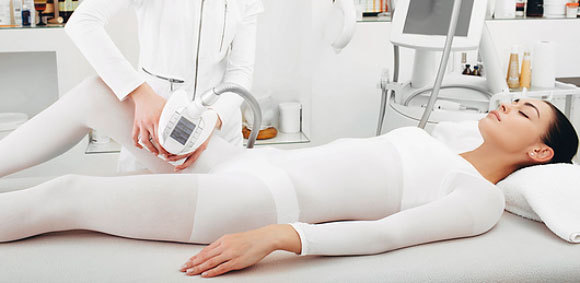
Don't seem to be very effective, if at all. Anti-cellulite massages | Source: Peakstock / Science Photo Library
External Massages
External measures, such as skin massaging techniques or the application of ointments and creams, were likely the first pioneers in the battle against cellulite.
One of these methods is endermologie, a massage technique developed specifically for treatment of cellulite. It is based on a mechanical device that rolls and unrolls folds of skin between two rotating cylinders, applying both pressure and suction using a pre-set program. The duration of a single treatment by this method is between 10-45 minutes and it is designed to be performed several times a week.
This method is based on the fact that cellulite is found in the subcutaneous area, which is rich in blood vessels. The intense massage supposedly stimulates the breakdown of the problematic fat cells, improving blood supply to the area and thus stimulating the process of healing of the connective tissue that holds the fat cells in place.
Notwithstanding the detailed theoretical explanation, research studies have so far not been able to document this mechanism of action, thus it is only a hypothesis rather than an established theory. As to the benefit of the method, studies remain divided: subjects have reported on improvement in skin appearance in some of the studies, but researchers were unable to measure the effect under controlled conditions. Other studies found a decrease in body circumference following endermologie treatments, but the specific effect on cellulite was very mild, and it is not known how long it lasted.
Creams and Ointments
Pharmacies offer a wide variety of anti-cellulite skin products, or in other words: creams and ointments.
One of the main roles of the skin is to prevent foreign substances from invading our body. This is why ointments are usually appropriate for treating skin problems such as wounds, burns or dryness. Most products do not even reach the subcutaneous layers, and thus they naturally cannot act within these layers or change their composition.
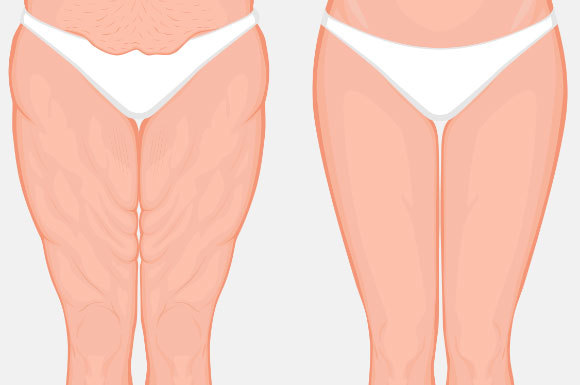
Retinol cream may be effective, but leads to only minor improvement. The safest way to get rid of cellulite: editing software | Source: Aksanaku, Shutterstock
A huge abundance of products is offered to customers in pharmacies, spas, cosmetics clinics and online. Nearly all promise considerable improvement in the appearance of cellulite, and some even claim to make it disappear completely. However, almost none have been tested in a large and thorough study. Most of these products are not supervised by health organizations and therefore may be dangerous and even cause allergic reactions, since some have dozens if not hundreds of ingredients, and only a handful of manufacturers reveal the chemical formulas of their products.
One of the ingredients in the field of ointments and creams that may offer a glimpse of hope is retinol. It is a derivative of vitamin A that is already being used in creams, especially those intended for the treatment of acne, sun-related skin damage and the smoothing of wrinkles. Studies have found that retinol is absorbed by the skin and increases both collagen production and local blood flow.
Researchers from Belgium examined the effect of retinol cream on cellulite in the thighs of 15 women aged 26-44, with moderate cellulite levels. For six months, the subjects received daily retinol treatment in the thigh area of one leg, and a placebo treatment containing a regular moisturizer without retinol in the same area on the other leg. The researchers measured skin thickness and elasticity at the onset of the experiment and six months following the onset of treatment, and took a tissue sample of the cellulite for laboratory testing.
Analysis of tissue samples treated with retinol revealed a structural change in the skin, indicating improvement in the structure of the connective tissue – the fibrous mesh surrounding the subcutaneous fat cells. In addition, the skin in the retinol-treated area became more elastic. However, no visible change in skin appearance occurred during the course of the study, and the cellulite did not disappear.
Thus, retinol is one of the few substances that was found to be able to penetrate into the deep layers of the skin, and even to have an effect on the skin’s structural properties, but as far as the desired aesthetic outcome, research findings are less encouraging. It is possible though, that in longer treatment periods, the structural effect would be translated into a tangible one.
In another research study, the use of retinol helped to smoothen the lumpy appearance of cellulite. Twenty subjects with cellulite were asked to apply retinol cream twice a day for six months. After completing this treatment, dermatologists and the subjects, both unaware of which leg received the real treatment and which received the placebo, were asked to evaluate the effectiveness of the treatment. Of the test subjects, 13 reported improvement in cellulite appearance, and 12 out of the 13 were also found to have improved in an independent medical examination. In addition, this research also found an improvement in blood flow in the treated area.
Generally, it appears that research studies on the effects of retinol on cellulite indeed found evidence of its effectiveness, but the improvement is minute and noticeable only following a long series of treatments lasting six months or more. Very far from being a magical cure.
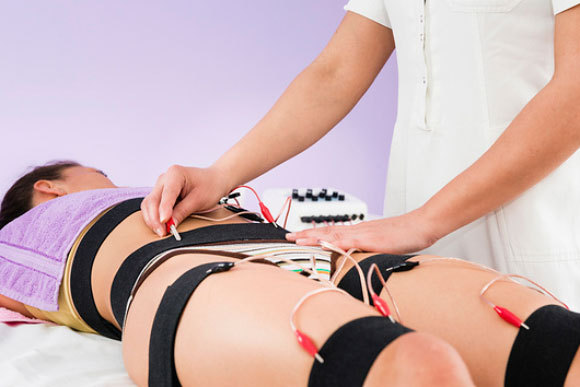
An electrifying experience that won’t help to get rid of cellulite. Electrical current treatment | Source: Microgen Images / Science Photo Library
Electricity, Electromagnetic Radiation and Lasers
Devices that use infrared radiation, ultrasound, lasers and electrical currents are central today in the cellulite treatment market. A wide variety of devices and treatment plans exist, and the companies providing them promise the earth to clients.
Many times, beauty salons and aesthetics clinics offer their clients a series of treatments that combine several methods, such as infrared radiation and radio waves, combined with different massaging techniques. Those marketing the treatments claim that the radiation heats up the subcutaneous fat cells and thus accelerates metabolism in their environment and breaks down some of them. In addition, some claim to accelerate the production of collagen and elastin.
Here too, reality is disappointing. In practice, the effect of all of these treatments is mainly focused on heating the tissue. Heating the subcutaneous tissue can increase blood flow to the skin, make the tough fibers more elastic and improve the situation in cases of chronic inflammation in the tissue. Doctors often use similar heating methods to relieve chronic pain, increase mobility in people suffering from stiffness of movement or to increase the elasticity of scar areas.
The problem is that the research studies attributing these treatments with a positive effect on collagen production, do not meet scientific standards. There is no good evidence to support the claim that heat treatments directly break down clusters of subcutaneous fat or the fibrous mesh through which the fat is pushed toward the surface of the skin.
In some of the studies that examined these methods, patients reported an improvement in cellulite appearance, but as mentioned, this is not an accurate measure of treatment effectiveness. One study evaluated the effect of a combined treatment on the presence of cellulite in the hind part of the thigh of 16 subjects. In addition to the subjective evaluations by the participants, tissue samples (biopsies) were taken from some of them before and after a series of treatments that lasted about a month. Results were disappointing: reports by the evaluators were positive in about half the cases, but tissue tests did not show any change in skin composition and the fat cells within it.
It is possible that these methods lead to some very minor improvement in skin appearance that is not significant enough in order to be identified on a physiological level. The effectiveness of these methods is currently controversial, but in any case, even when a positive effect was observed, it was usually small and short-term.
Wave treatments
This category includes treatments with sound waves, such as shockwave therapy or ultrasound – both of which use sound waves outside the human hearing range. Sound waves of different frequencies are transmitted through the tissue, while mechanical pressure is applied to it. The method is widely used in the field of physical therapy to treat a variety of medical issues, such as muscle pain, fracture remodeling, etc.
The use of sound waves for treatment of cellulite is a relatively new approach and thus studies examining its effectiveness are yet scarce. For example, a small study followed 11 women who received a series of treatments on a single leg. An independent examiner, who did not know which leg was treated, identified the treated leg successfully in only half of the cases.
A review of the scientific literature on this subject revealed that the use of sound waves affects the subcutaneous fat tissue and improves the arrangement of collagen fibers within it. However, the reviewed studies were merely mediocre and dealt with different treatment plans. Nonetheless, the sound waves did seem to have some effect on cellulite, although it is unclear how long it lasted. A different review of a wide range of cellulite treatment methods, conducted by the American Academy of Dermatology, found that shockwave therapy may be effective when a large number of treatments are performed. In contrast, ultrasound therapy was found to be ineffective by itself, but may be beneficial in combination with other forms of treatment, although there aren’t enough studies yet to establish this.
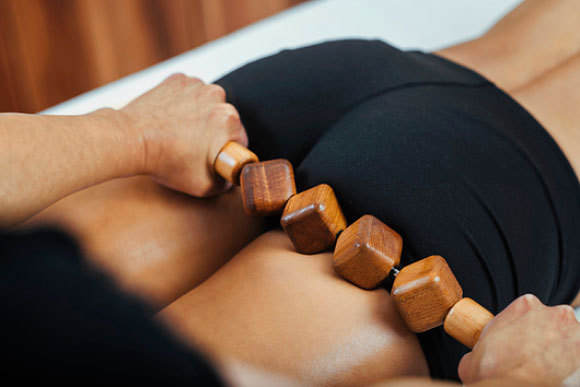
The only way to prevent cellulite is by maintaining a healthy lifestyle. Neither torture nor massage are of much help | Source: Microgen Images / Science Photo Library
Physical Activity
It is no secret that routine physical activity contributes greatly to your health, and health organizations all around the world often recommend it. We know that lack of physical activity and a sedentary lifestyle are the among the leading factors contributing to cellulite appearance, but we cannot determine conclusively how fitness training can help get rid of existing cellulite.
A different study, reviewing a number of approaches for the treatment of cellulite, reached a similar conclusion: physical activity helps reduce the lumpy appearance, but is more effective when combined with other means. In addition, the optimal duration of physical activity is not yet clear, nor is the type of physical activity that is most beneficial, or the optimal level of intensity for achieving the goal. Physical activity is an inexpensive and accessible tool, with no side effects, and it is important to keep studying its advantages and limitations in the treatment of cellulite.
In addition to the treatment methods mentioned here, many techniques abound, claiming to offer magical solutions to make cellulite disappear. Some have either not been studied at all, or were found to be ineffective. Some methods, such as the freezing of subcutaneous fat and mesotherapy, could even be dangerous, with health organizations having issued warnings against their usage - these treatment methods include injecting into the hypodermis substances that may cause side effects and damage.
So What Do We Know About Cellulite?
First, it is important to understand that no magic solutions exist. Cellulite is a complex physical phenomenon that occurs as a result of a multitude of factors, some factors are genetic, and thus we exert no control over them, and some are related to our lifestyle. We are surrounded by treatments that may sound promising, but in practice most of them are disappointing and the effect of the small minority of treatments that may actually be beneficial – is only minimal.
It seems that physical activity and weight loss may, among other things, reduce the amount of cellulite in overweight people and improve their skin’s appearance. However, even this method does not work for everyone, and in any case, some of the cellulite will remain even after the weight loss.
Massages, electrical therapy and soundwave therapy may help to a certain extent, but in order to gain benefit from these treatments, they must be carried out frequently and over a long period of time – which does not seem practical for most people. Until a truly effective treatment for cellulite is found, we can be comforted by the fact that we’re all in the same boat. And if that’s not comforting, remember that the best way to fight cellulite is to prevent it from appearing in the first place by maintaining a healthy lifestyle, remaining physically active, and eating a balanced diet.
